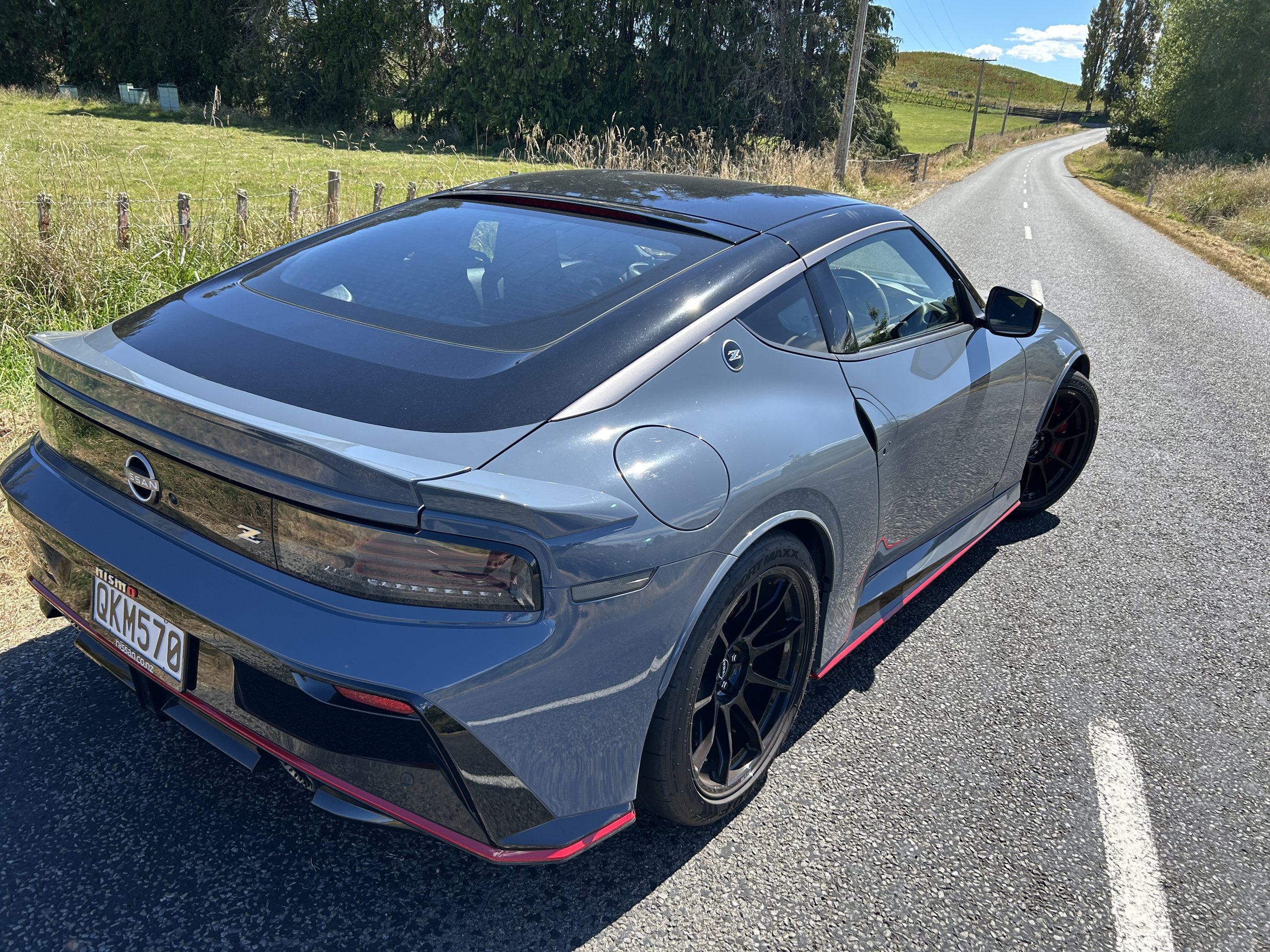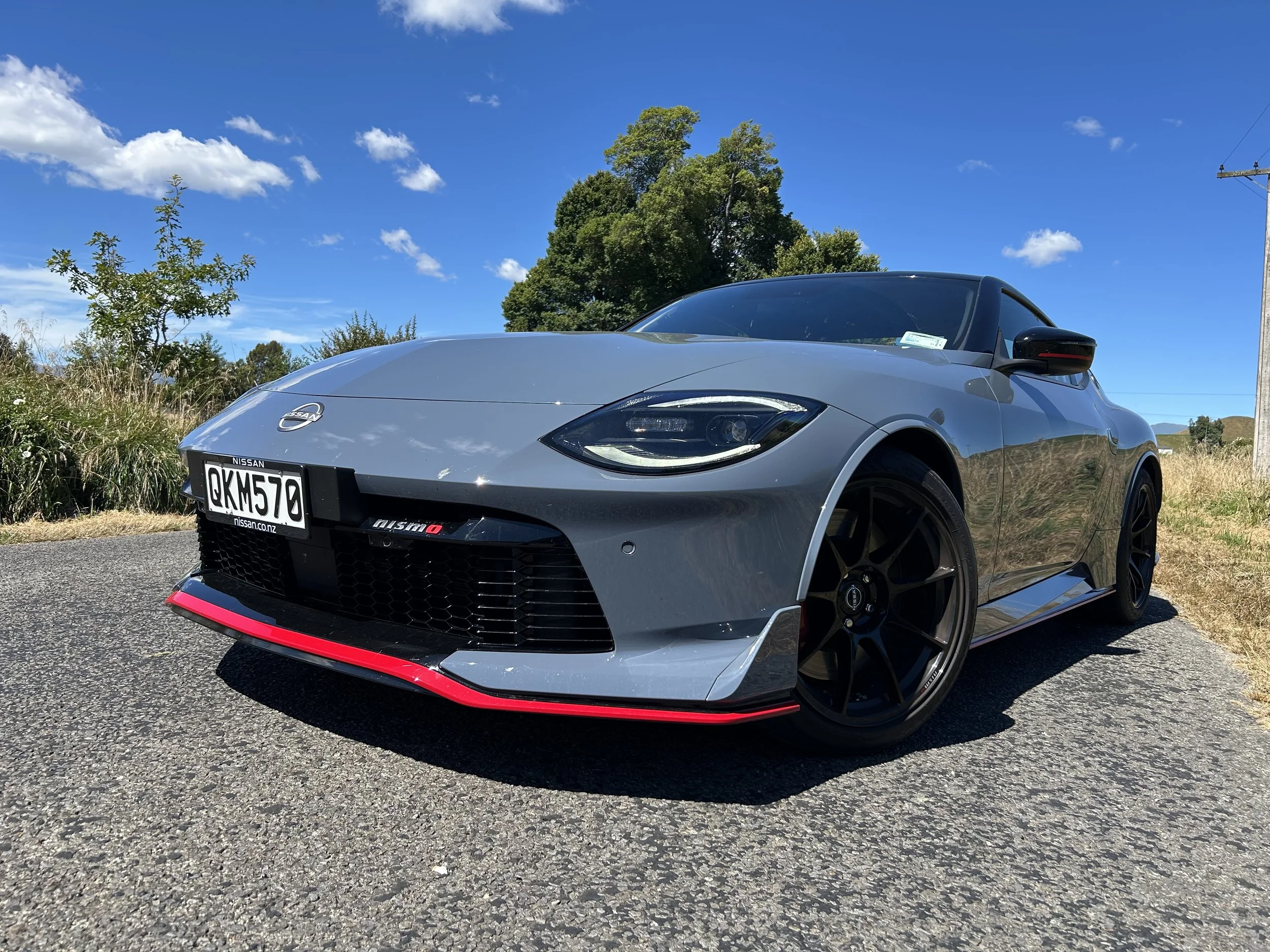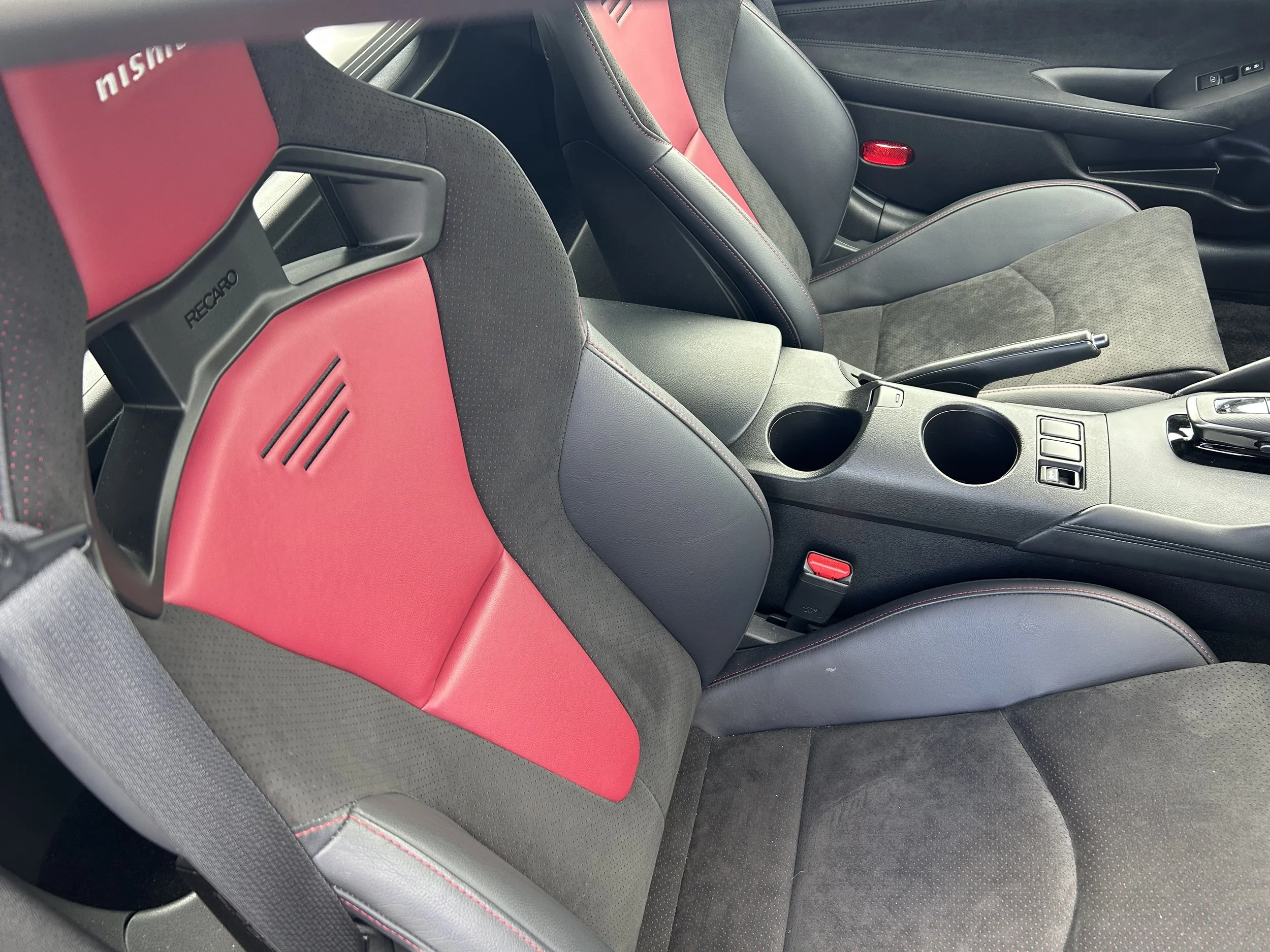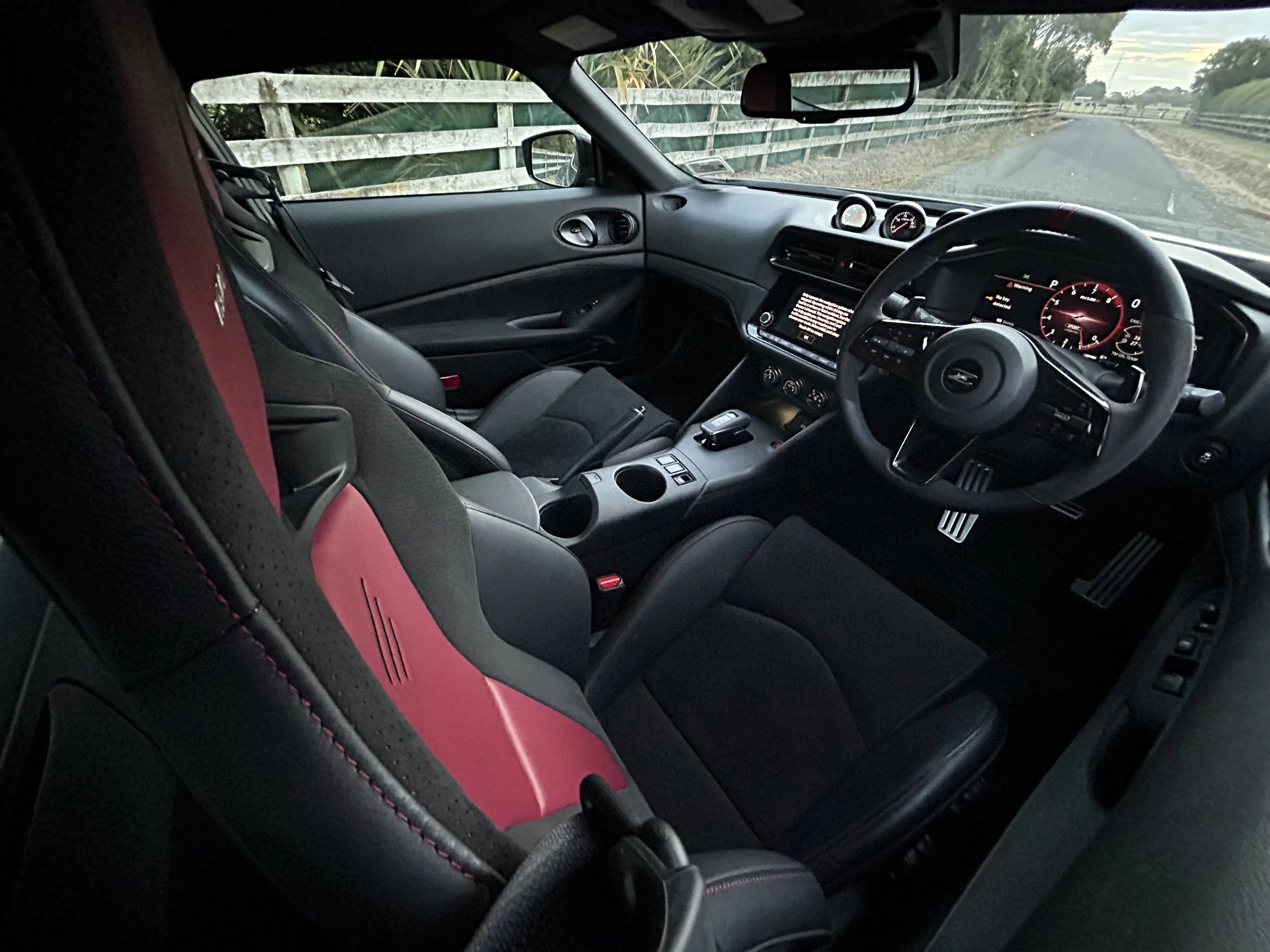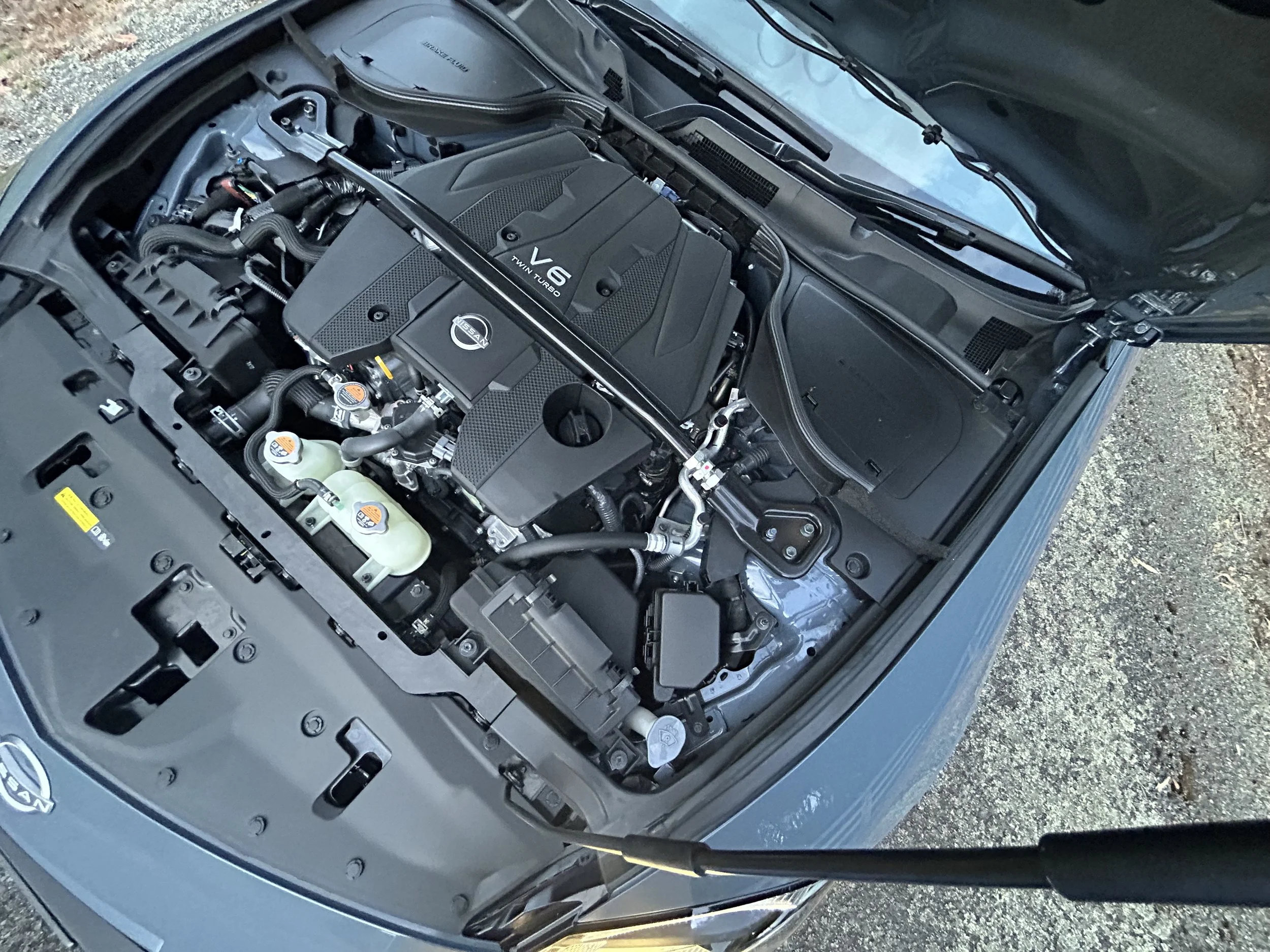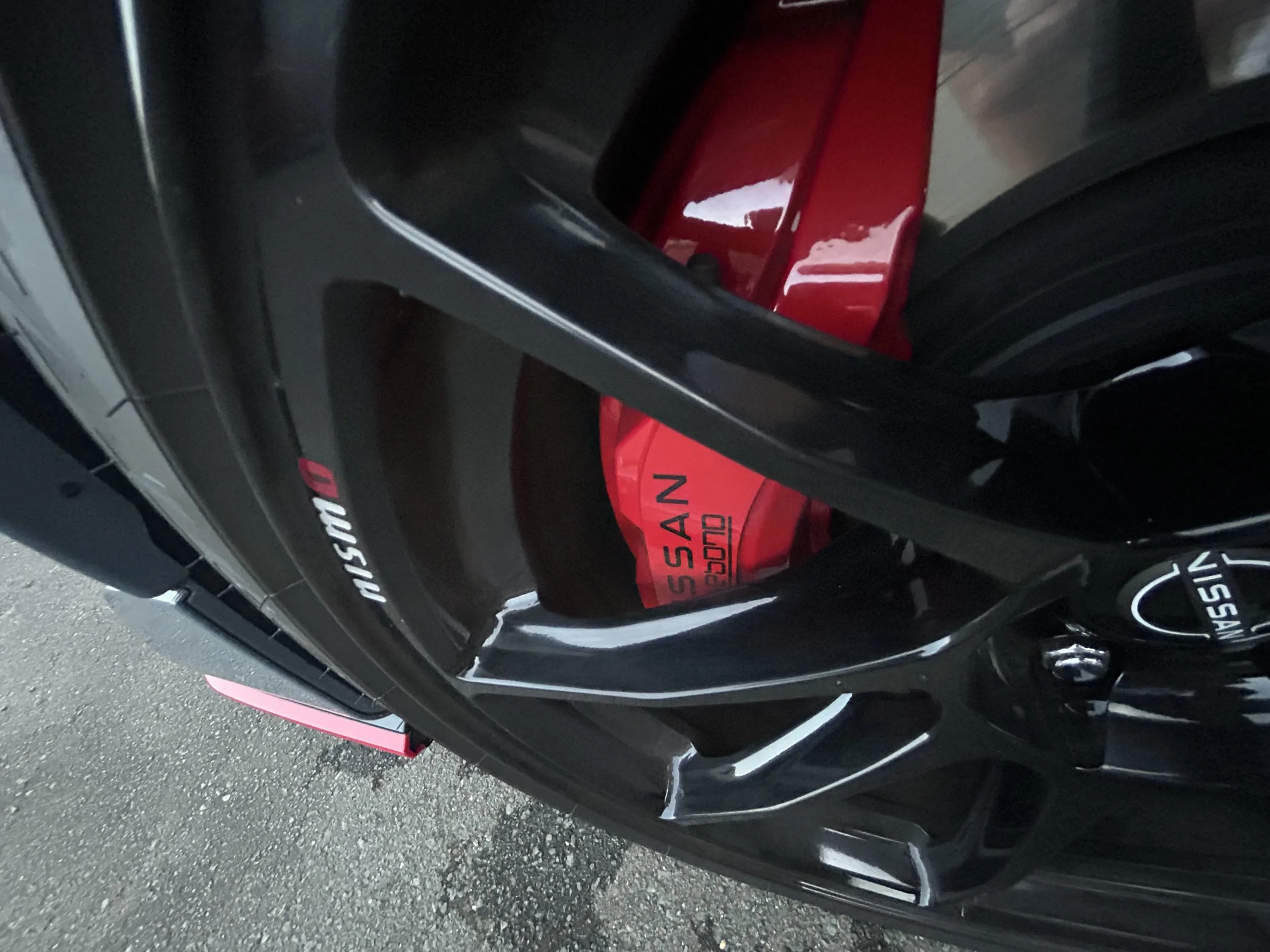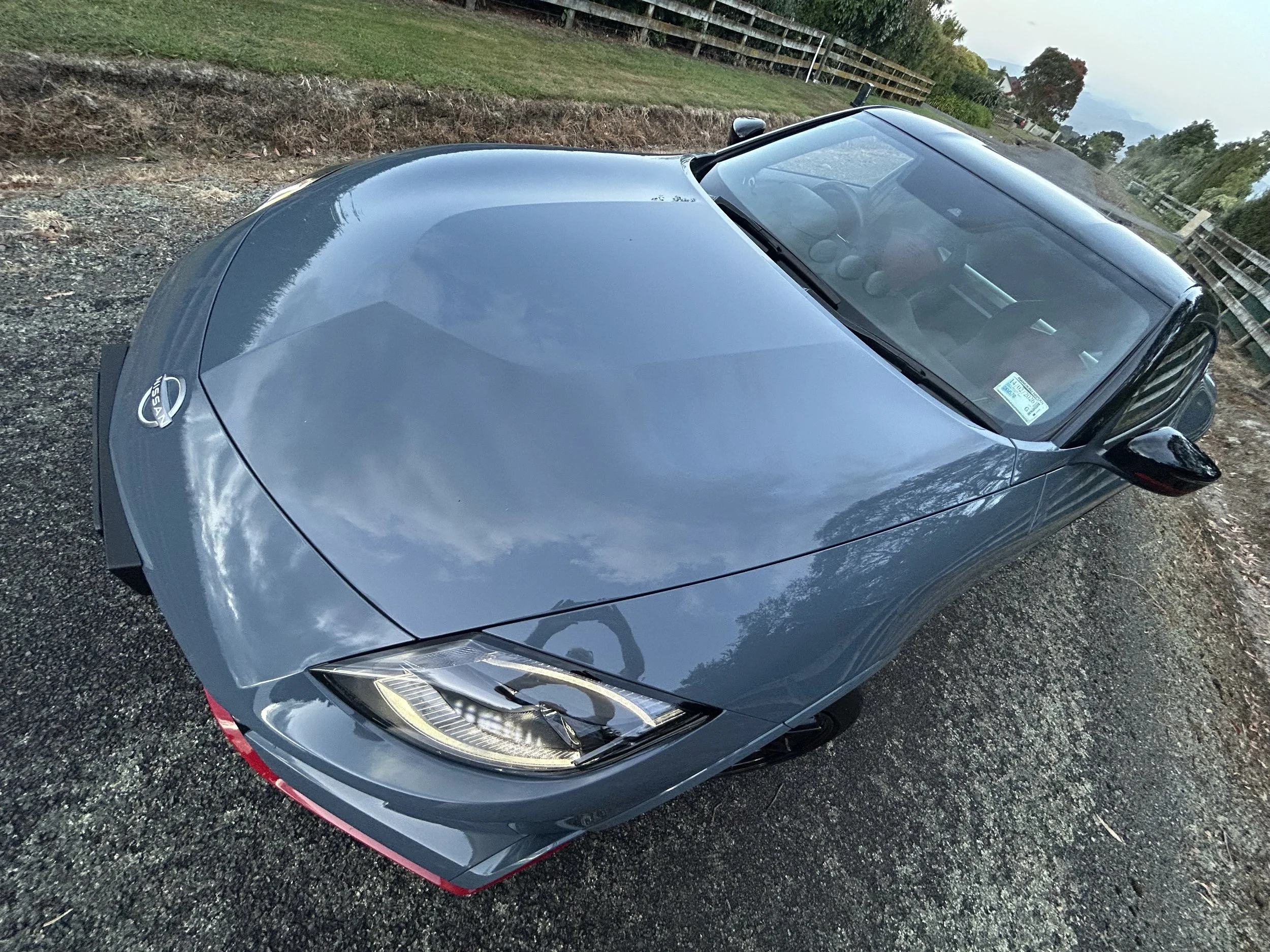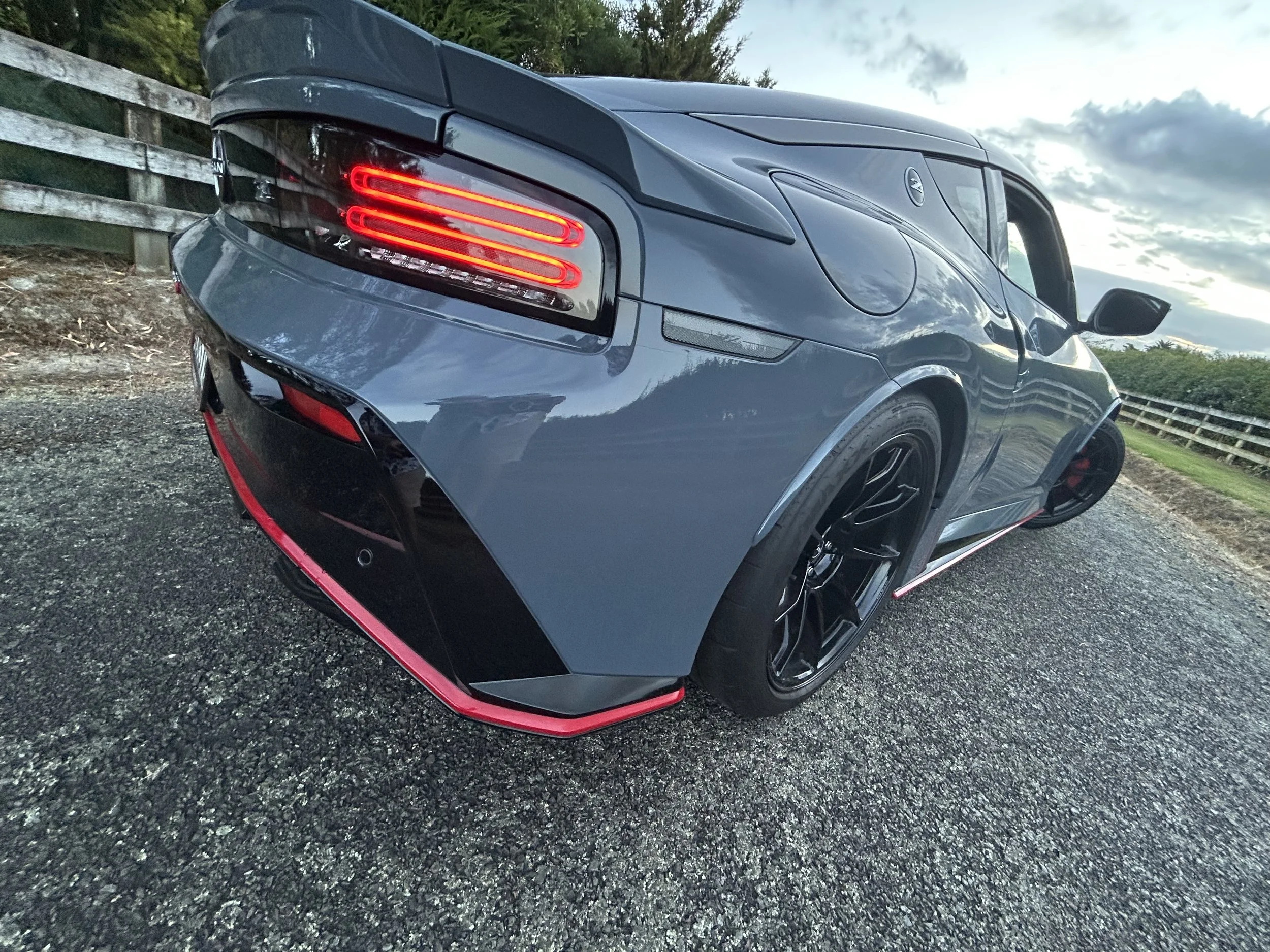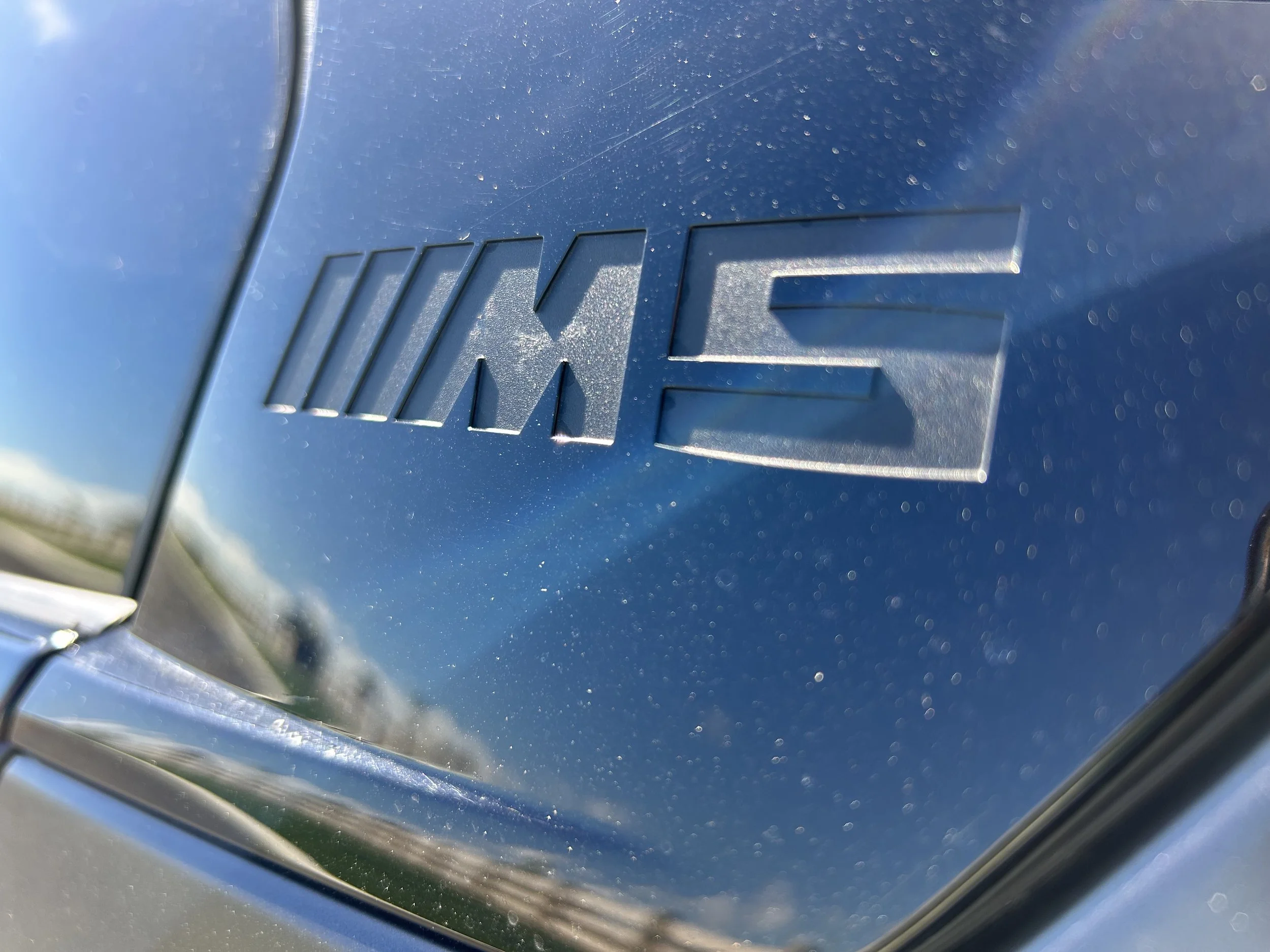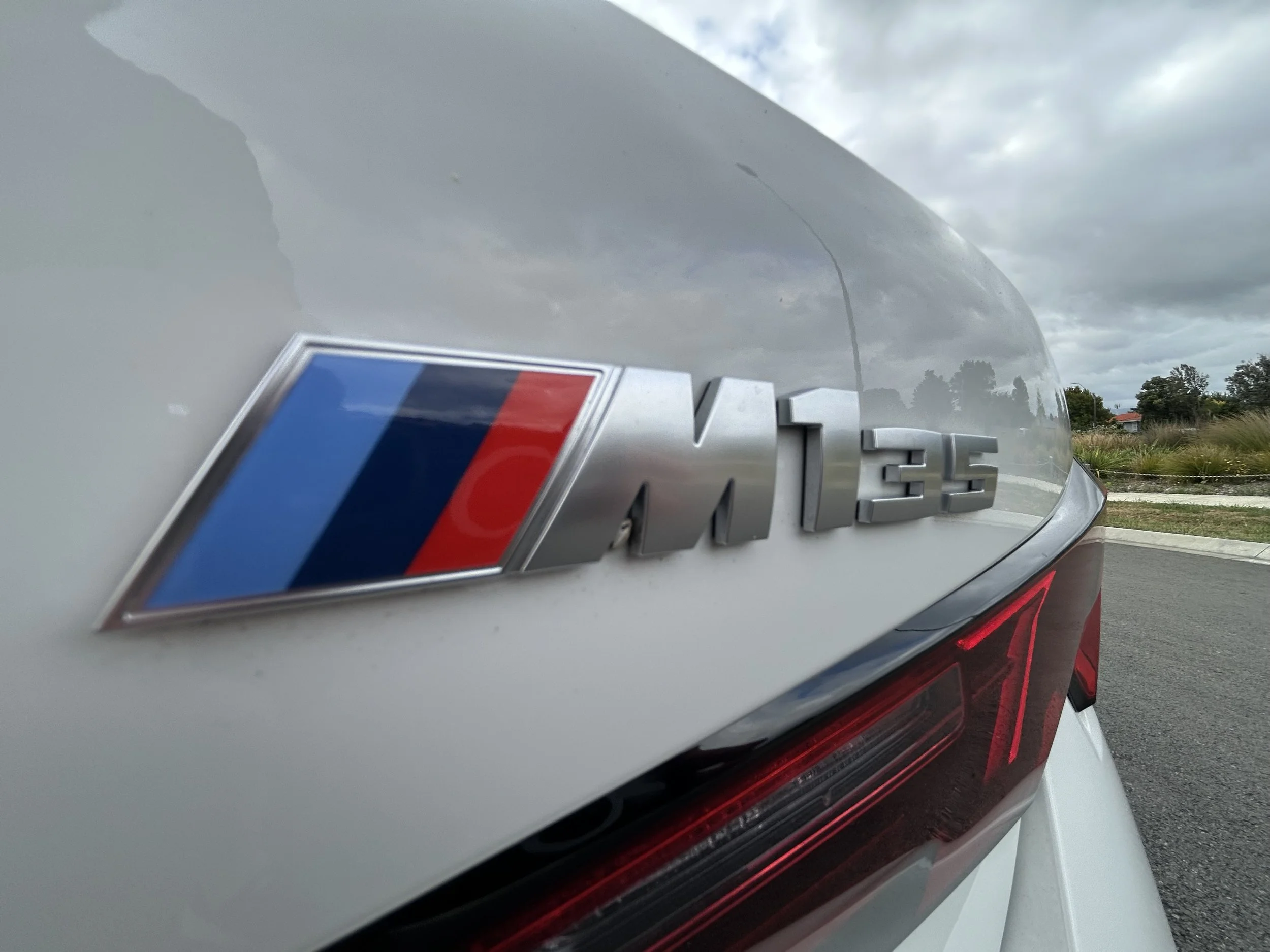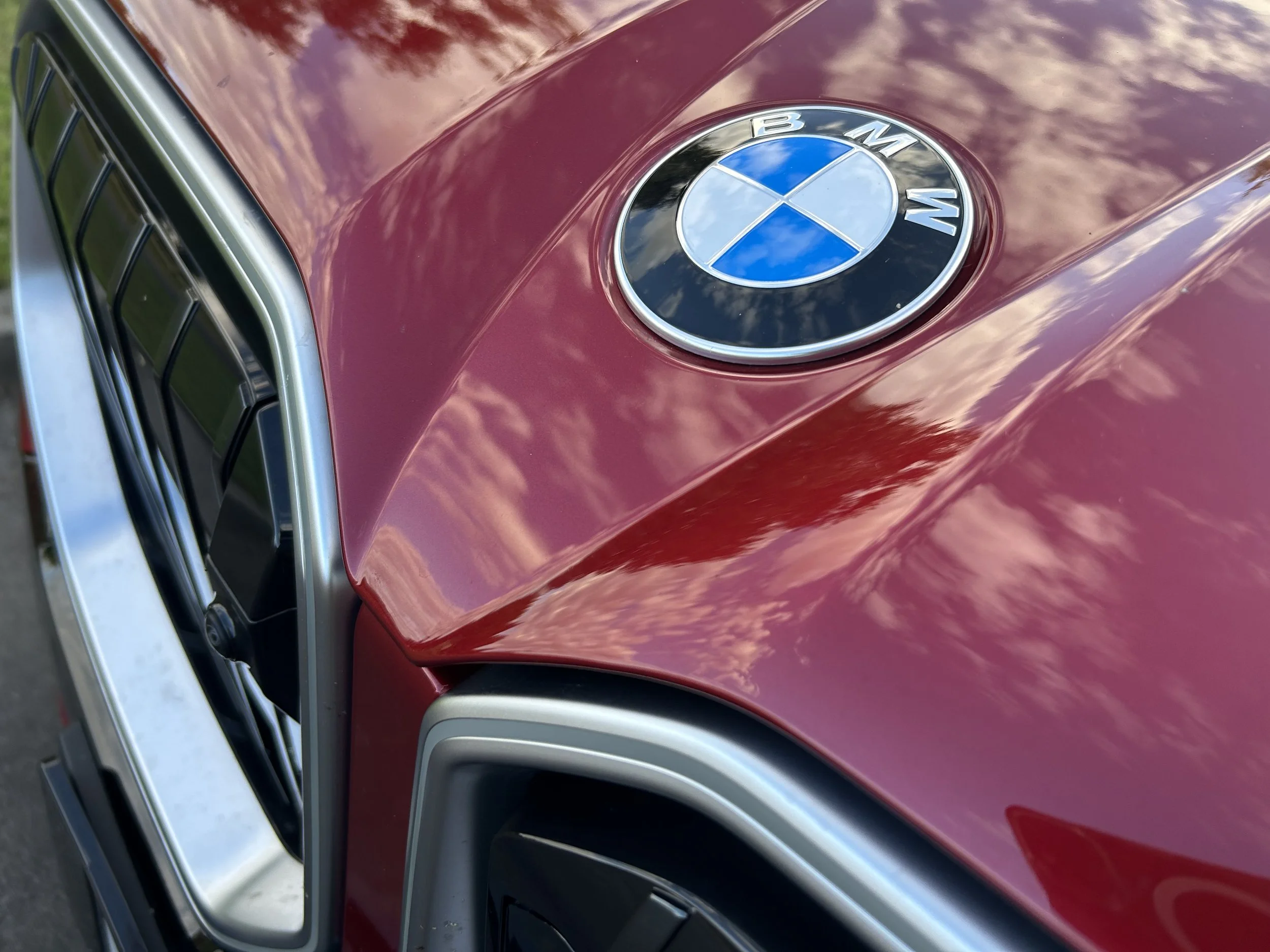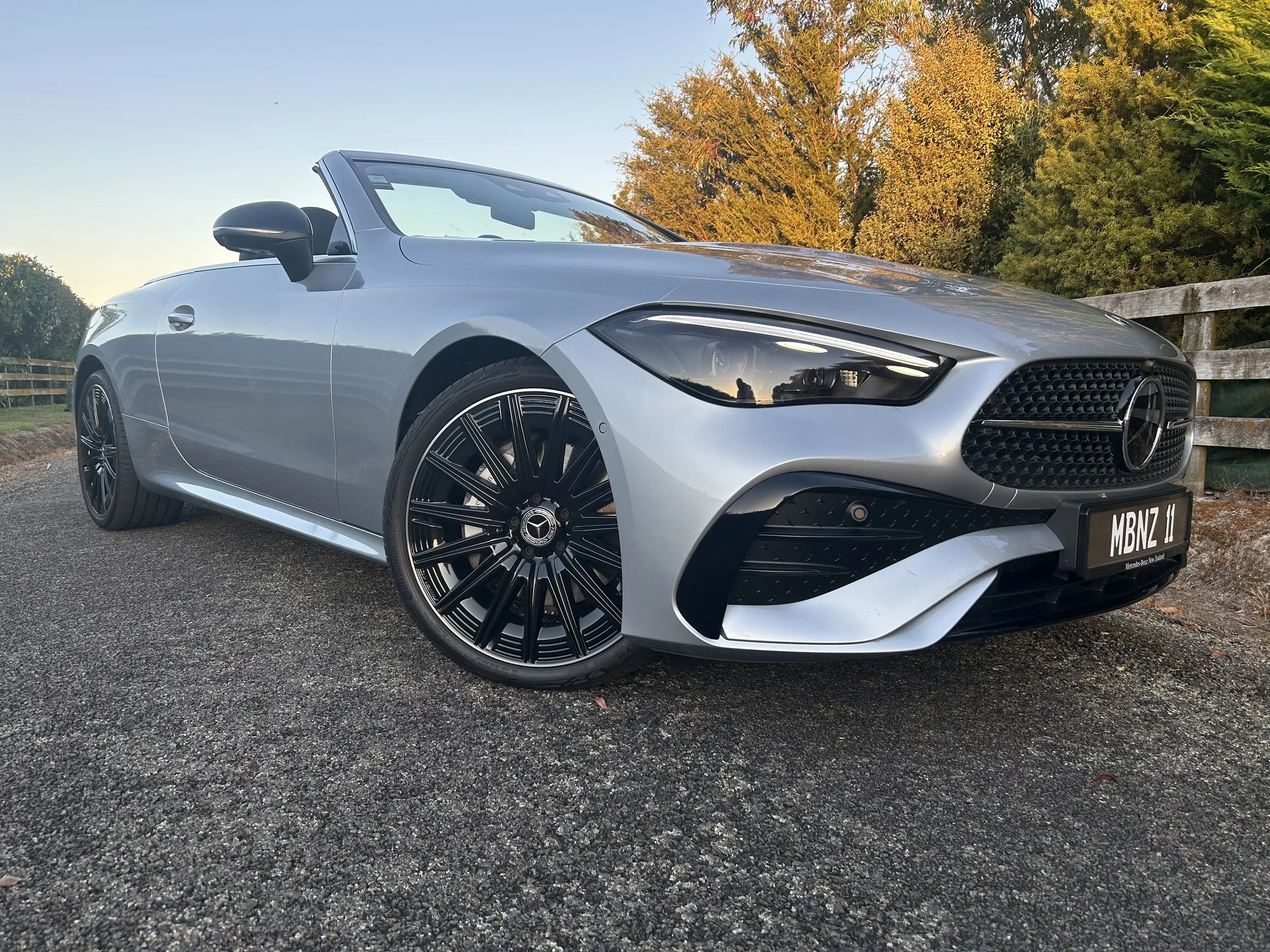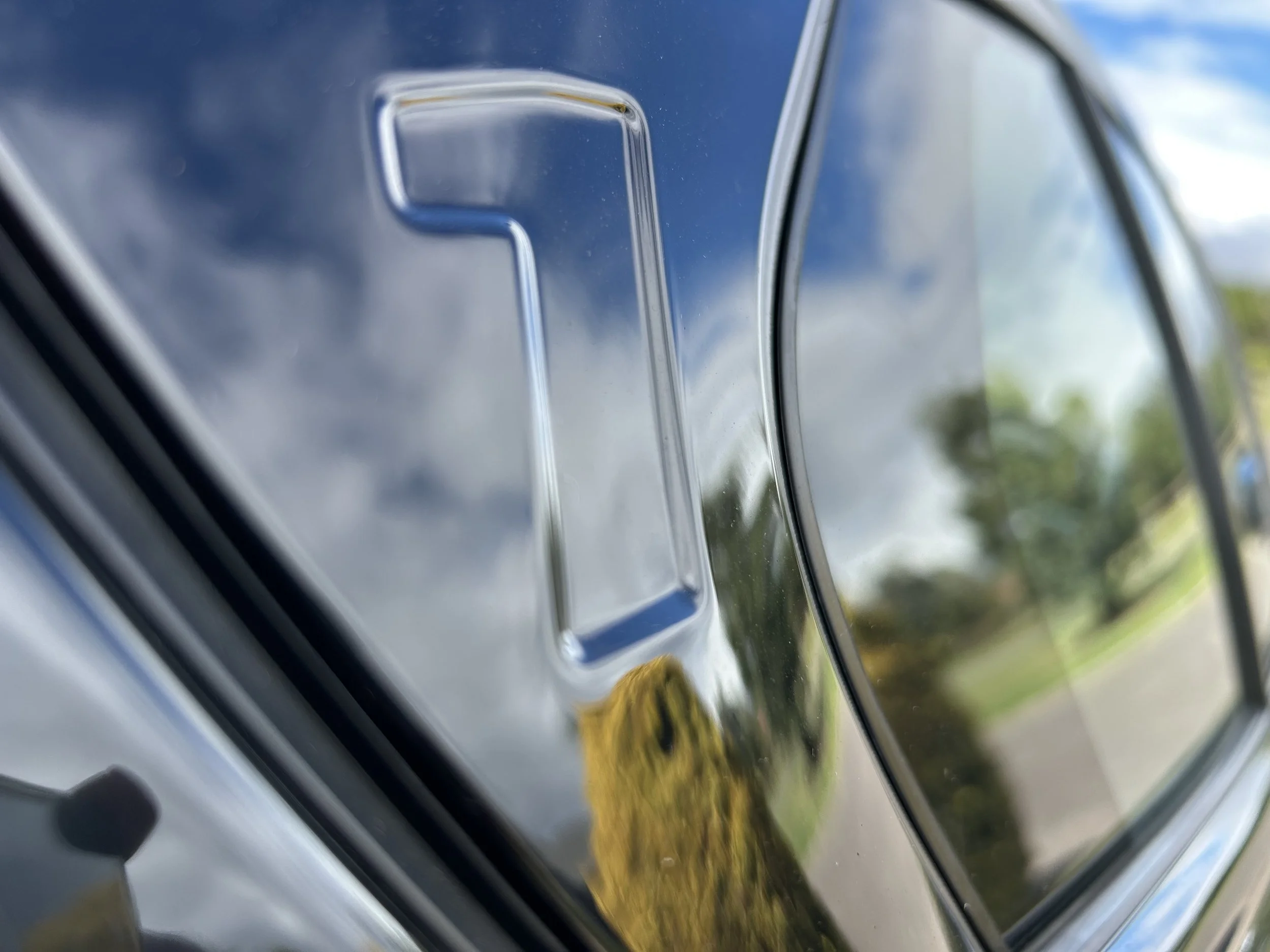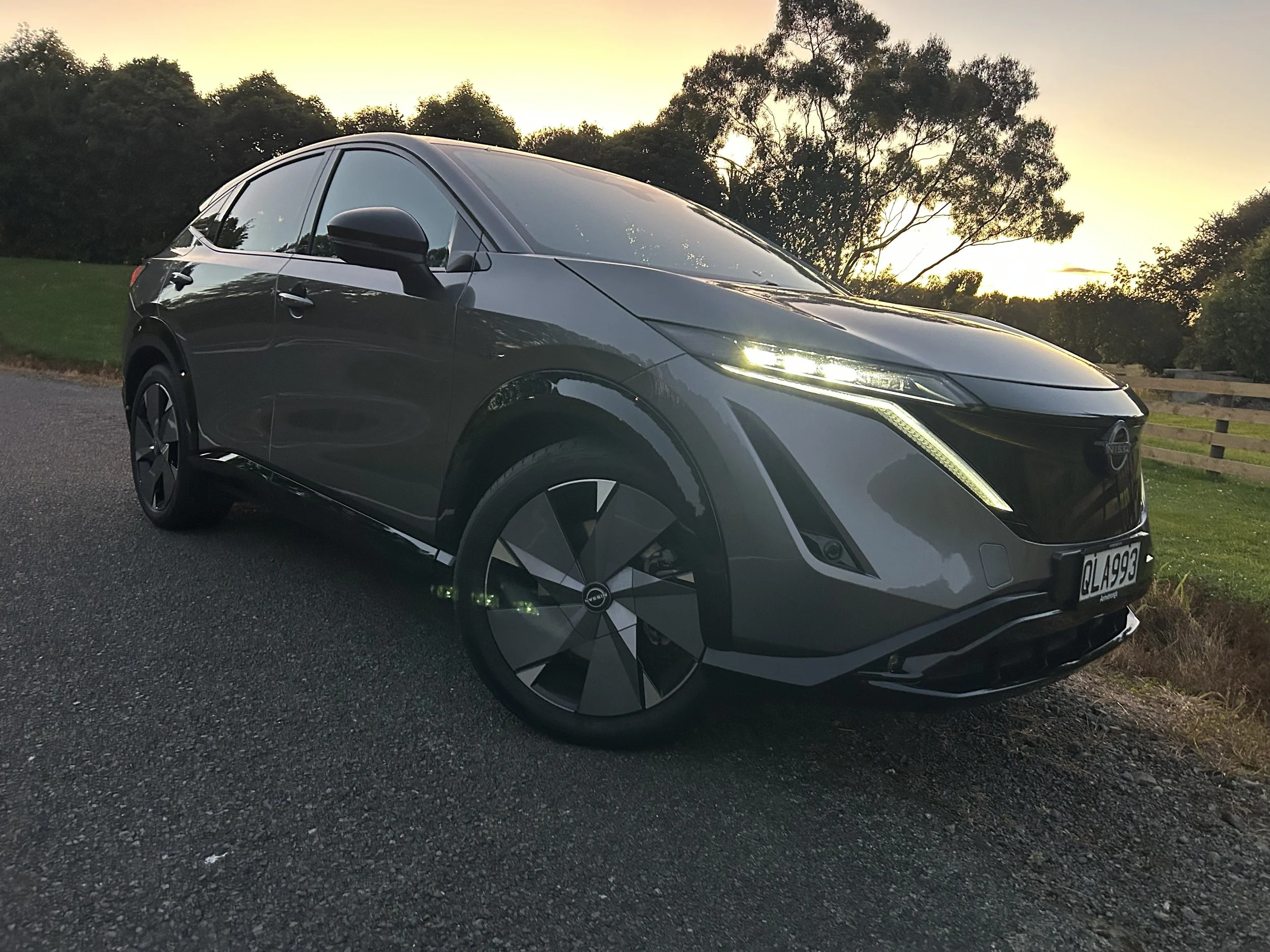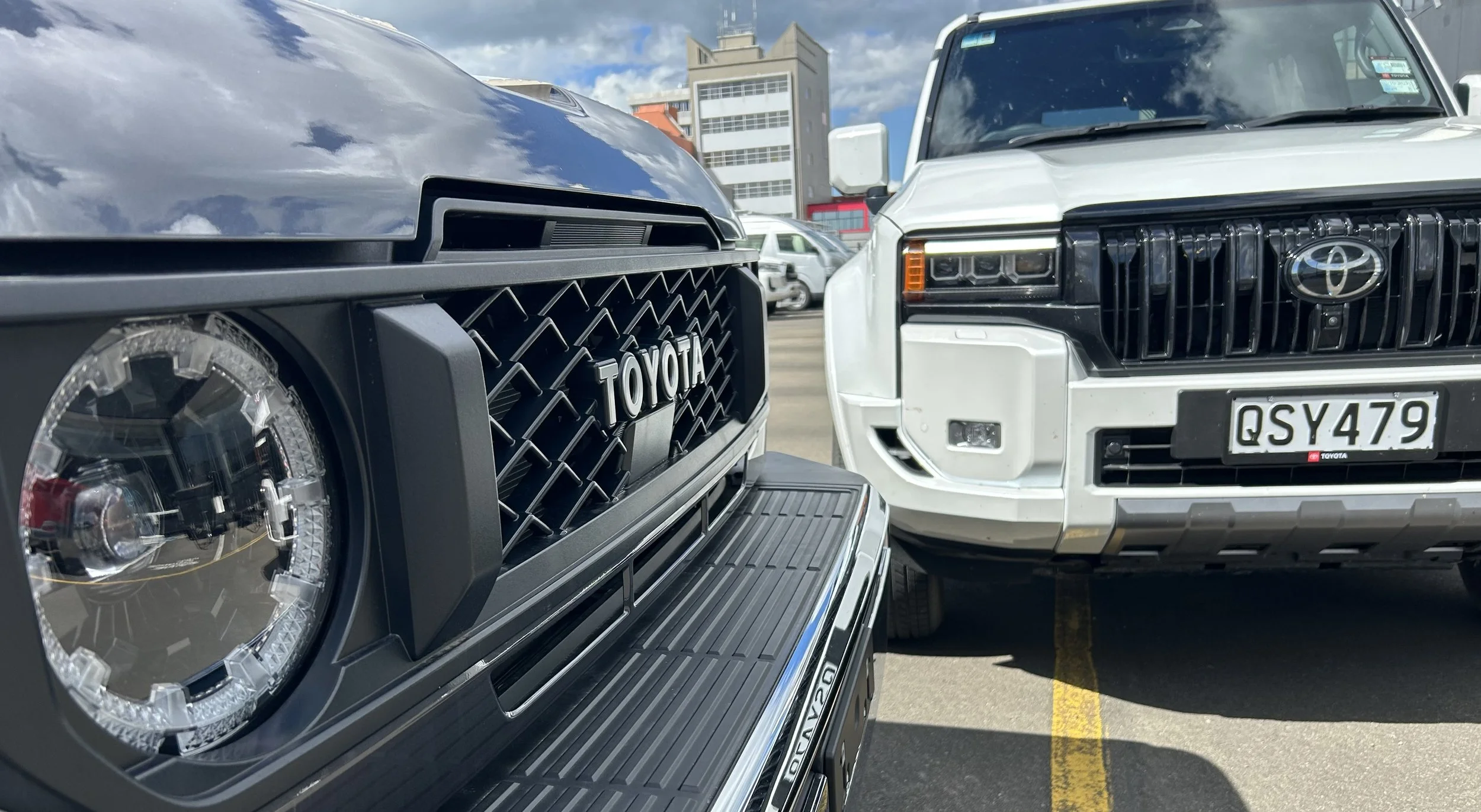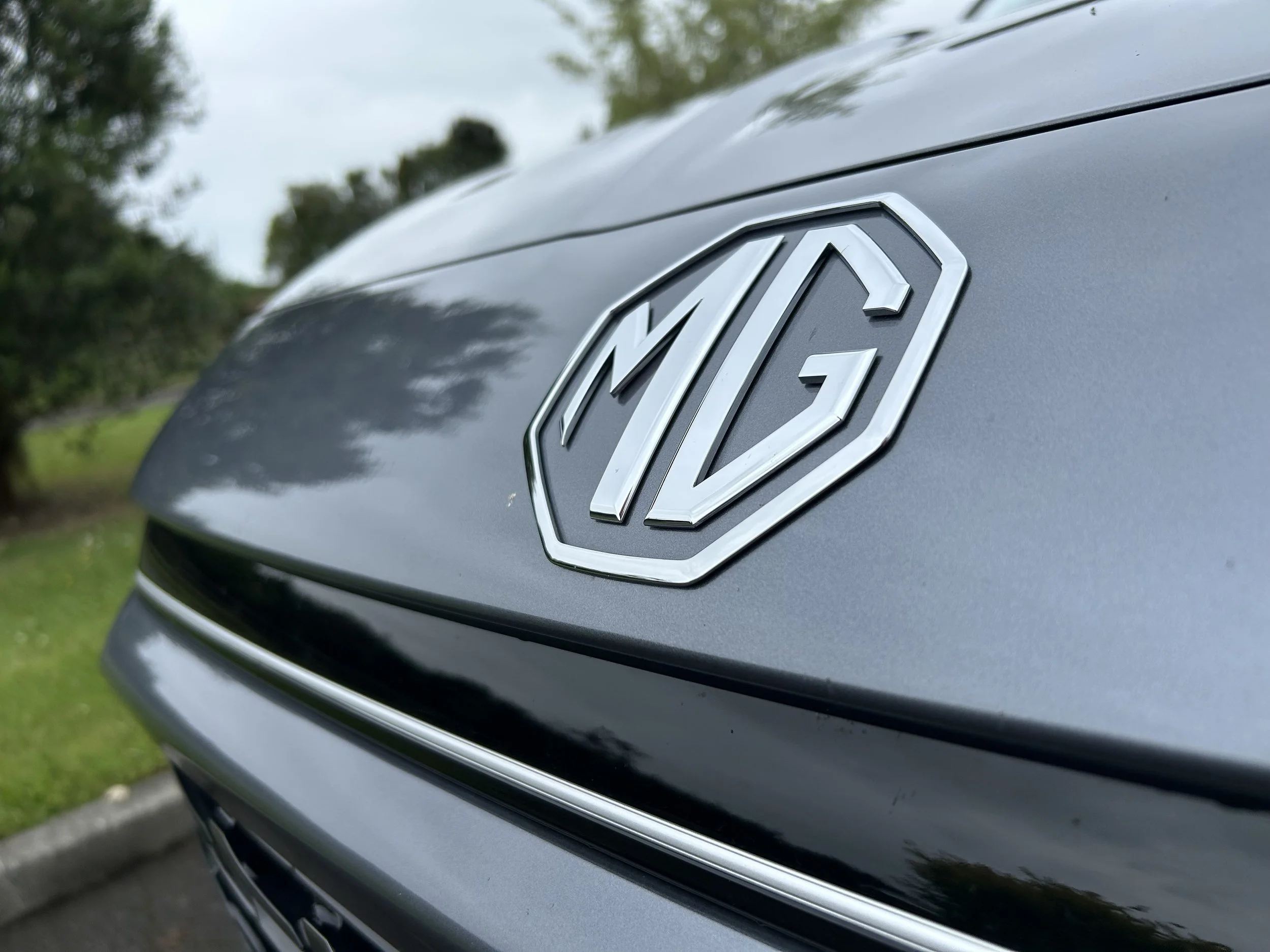Nissan Z Nismo road test review: Pumped for better play
/If the standard Z come across as being a bit too California cruiser? Try the one from the factory’s tune-up specialist.
Price: $105,900
Powertrain: 3.0-litre twin turbocharged petrol V6, 313kW/520Nm, rear-drive, nine speed automatic.
How big: 4400mm long, 1870mm wide, 1315mm high.
We like: Enhanced driver involvement; looks as if it has been plucked straight from an underground night race meet in Tokyo.
Not so much: Cries for a strident soundtrack; dated interior fit out; challenging as a daily drive.
“CAN it beat those Ferraris over there?”
“Is that a Lamborghini?”
“Is this a racing car?”
Short answer to all three questions is ‘no’, ‘no’ and …. well, with a it more prep, ‘yes, it could be’.
YEt, it’s a fact that even though it looks a lot more bad-arse in its Nismo representation that it does in standard specification, the Nissan Z car even in this added flagship form ultimately knows its place in performance life. It still plays second fiddle to the fantastic GT-R and the gap between one and the other is still a mighty leap.
Don’t be despondent. The Nismo Z is anything but a drudge. All the in-house tuning shop enhancements that are largely responsible for adding a nigh on $20k premium over the standard car are seriously intended and properly implemented.
A beefier tune of the 3.0-litre twin-turbo V6, adds 11kW and 45Nm is a good start but even more tangible is all the other honing. Stiffening the chassis, bunging in a big brace bar across the engine; unique stabiliser bars, stiffer spring rates, new dampers and stiffer front and rear suspension bushes; widening the tracks by 15mm and adding fatter, stickier rubber, improved brakes.
It’s all good stuff that means this flagship is emphatically more focussed on pitching for leadership of the cadre of fast, V6-engined, rear-drive coupes from Japan … a club which is rather small. The Toyota GR Supra these days seems the only other candidate for membership.
But even though it is not a full ‘supercar slayer’, you can understand why those questions, all posed by inquisitive small kids BTW, will be asked. The whole ambience of the Nismo suggests it is properly focussed on being a pukka sports car.
And it’s not window dressing. A week with it enforced this is a very different, much more highly-flavoured alternate to the standard model I drove in June of 2023. And a day spent at a local car show reminded that this shape still has remarkable a X factor.
You have to love it that some of the best tyre-kicker enthusiasm is from youngsters who likely still have years to go until they can gain licenses.
Undoubtedly, the future for them is electric. Nissan has those bases well covered, with more to come.
Yet even if they never get to actually drive a Z car, they’ll surely always have a fond memory of what it represents.
As do I. My Z fascination began at just their age; my walk to and from school took me right past a house where an orange 240Z always seemed to be parked outside, ready for me to smudge mark the driver’s side glass.
We were a car family; primarily deep into vintage models but also with connection to people with top line British and European fare, one with an original E-Type. That or this incredible car from Japan? I just couldn’t decide.
Anyway, back to the Nismo Z. Aside from giving it a good blast on some great quiet country roads, what to do with a machine that looks to have come straight out of a Fast and Furious movie?
The answer came by chance when I learned a small town just a hour from where I live was staging a charity car show. Pay $10 to get in, park on the rugby field for a few hours, drop the windows, lift the tailgate and bonnet and let other petrolhead enjoy the sight.
It was great day; so many questions from all ages, and a lot of very well-informed opinion, too. The Z might now be niche, but it clearly hasn’t been forgotten by petrolheads.
This or a 240Z? There was one of those at the show; highly modified but tastefully so … the ‘original’ would be hard to refuse. Still, all credit to Nismo; it’s latest is also in my brain, too.
Two-door coupes trade on their looks, and very few are as striking as this one. The Z template is well used; but it still produces a fine-looking car. One made even better by Nismo.
Every additional external treatment - the racy bodykit, red pinstripes, Rays forged alloy wheels, and Slate Grey paint exclusive to this model - seems perfectly blended; and there’s nothing at all chintzy.
So often a bigger wing and bib spoilers can look too extrovert, but here every additional ingredient seems properly proportioned. You know it’s got a lot of additional stuff, but nothing that detracts the inherent elegance of this donor shape.
The tuning arm’s delivery to the interior is also very obvious, with with more red accents, Recaro bucket seats, a Nismo-branded instrument cluster and pretty of Alcantara trim.
Just the steering wheel in sporting a red 12 o’clock marker is enough to remind this is a car designed for the street, but not adverse to a circuit.
So it’s clearly a performance product. Where it struggles is expressing as an outright exemplar of modern performance motoring. That’s not so much to do with this generation having been in existence since 2021 - though it took a bit longer to get here - but also an unavoidable of the restrictions imposed with its development.
As much as the Z is fresh, it is a car built on older bones, being a very heavy revision of the predating 370Z, which in turn was a continuation of the 350Z.
The reprocessing and refinement of well-used elements was prudent and justified - cars like these rarely achieve the volume to cover development expenses; the Z has always been a vanity project.
As much as 240, 280, 300 and 350 Zs are collectible now, it’s doubtful any delivered profit returns during their periods of sale. And times are tougher these days. If Nissan had been forced to start entirely afresh chances are it wouldn’t have taken the risk.
On top of this, Nissan has always liked to retain some elements for the sake of history. The whole profile, the bonnet bulge, the triangular rear quarter glass, the triple binnacles on the dash and the long-handled manual parking brake?
All reference back to the 1970s’ original. It’s a vibe it says true fans appreciate, and I cannot disagree with the sentiment. However, with this sort o thing going on, I wasn’t entirely surprised why many people who stopped by to check out this car still erroneously referred to it as a 370Z.
It being something of an old phwoar horse shows when it sits alongside that Supra; the Toyota - thanks in no small part to being based off a BMW - has a far more modern ambience and gets ahead for sophistication.
As much as the Z ticks off on most salient expectations in respect to its technical and comfort provisions, it does cut corners. We’ve been through all this previously, but suffice to say a lot of the controls look dated and most of tech is getting that way, too. There’s no wireless smartphone mirroring here (you can instead cable into single USB-A and USB-C ports) and the central touchscreen is small and appears to be the same infotainment unit used by the entry Qashqai.
Like all good sports cars, it puts aside some comfort in pursuit of delivering to purer ambitions. That this is a car that very clearly demands driver commitment becomes clear when you site yourself behind the wheel.
If, like me, you’re tall and too comfortably built, that’s something of a gymnastic feat. While the styling language communicates this as a long and lean car, this is a tight ship.
The Recaro-supplied buckets are brilliantly form-fitting, but even though they seem slimmer in construction than the standard chairs, the fact remains that for a tall person, it’s a capsule in which every millimetre counts.
I had to get the seat back to its farthest recline and the base to its lower position to feel comfortable, recognising in hindsight that this would have been better accomplished had not been sitting in it while I worked the adjusters, as the one for the backrest angle is likely far less awkward to reach when you’re outside the cabin than in it. One nice touch on this seat, all the same, is that it has a manual adjust to bring the seat cushion position forward. That’s a huge plus for us long-legged types.
Practicality was never a strong point before and isn’t much better. Within the immediate occupant area, there are two cupholders, bottle pockets in the doors and space for oddments. A large storage pocket sits behind each front seat as well. The boot is small. At least Nissan has relocated the strengthening brace to make loading in and out a little easier, but luggage-wise you’ll be restricting to small carry-on suitcases and daypacks.
Even with a camera and anti-collision alerts to assist, reversing out of angle parks can be a bit nerve-wracking, and in urban driving the standard blind-spot and rear cross-traffic warnings are handy given the chunky rear pillars and pumped haunches. Over the shoulder visibility is non-existent. Finding yourself at the same height level as a big truck’s wheel hubs when you’re in multi lanes is a sports car 101. Rounding out the safety suite are drive attention monitoring and traffic sign recognition.
These aren’t whinges. It’s just typical sports car life, all in all. You either accept it, or you move on. The joy that comes from the driving makes discomfort worthwhile. But you do need to practice your egress, else there’s every chance yo
The Infiniti-sourced VR30DDTT engine has a fine pedigree and, in the standard Z, the 18 percent increase in power and 28 percent increase in torque over the old 370Z was welcomed.
Even so, the Nismo under-bonnet rework transforms the donor car’s character. An amalgam of improved cooling; a revised electronic wastegate control to increase turbocharger boost and turbine speed; incorporating GT-R Nismo-inspired independent ignition spark timing … those seem to make difference to the mill’s reactivity; simply, it sharpens up. No wonder they were keen to deliver in launch control and a new Sport Plus drive mode; it really makes the most of both.
It’s got stomp. You give it a prod and, in either of the Sport settings, expect plenty of punch; well enough to smoke those rears if you, say, turn out of an intersection and unload too soon; a potential also arising when it hits railway crossings and lightens up. It provides a proper analogue driving experience that really engages and tests a driver; let alone those sticky Dunlop SP Sport Maxx tyres.
Would be better as a manual? Knew you’d ask. Nismo doesn’t give the choice;. Some will argue that, with an orthodox automatic gearbox, it could be judged less an outright sports car than the shape and stance might suggest. Agreed, it’s a shame it doesn’t have an advanced automated manual. It’d be worthy of that technology. Yet, most buyers want auto and that’s that.
Nine speeds is a lot; no surprise that in fully automatic mode, as soon as it is fed the berries, it’s keen to drop a ratio. Take over changes for yourself with the paddle shifters behind the steering wheel and you’re basically running seven forward gears. But in that format it will also lend gratuitous throttle blips on every down change. Flicking between Standard and Sport is your lot with the factory car. Nismo adds a Sport Plus and … well, it’s a different game play.
It tightens throttle and steering response, remaps the stability and traction control thresholds and the transmission will hold onto gears longer and also downshift earlier and more agressively.
Alternately, you can flick into manual mode and take control via the steering wheel-mounted paddle shifters. You’re going to have to pick your moments when applying this setting, but it is the making of this car. It still doesn’t feel quite as nimble or athletic as the Supra; but that’s not surprising given the Toyota is more than 150kg lighter. Even so, the Nismo is the Z as a enthusiast would want it. Everything feels more rewarding, not least the steering feel and the car’s overall balance. It simply drives more ferociously.
And sounds it, too? Well … hmmm. While there’s a noticeable amplification of the augmented sound design in the Sport and Sport Plus modes, and the fake pops and overrun sounds that pipe into the cabin can be convincing, it’s still easily outspoken in the company of other performance sixes. A bit more brio to the exhaust note wouldn’t hurt. If you feel a Z shouldn’t stand for zzzzz, best seek out an after-market solution.
The price you pay for going hard is in fuel spend. Running costs won’t go unnoticed on your credit card statement. A brisk 95 kilometre run over some great roads took care of half a tank. Another 120 kays at best behaviour eased that consumption, but not to point where you’d call it pious. But, again. Comes with the territory.
When Nissan launched the Z, there was much talk about it being a true katana blade, but I found it just was quite as sharp as I’d hoped. Nismo has provided the whetstone.

